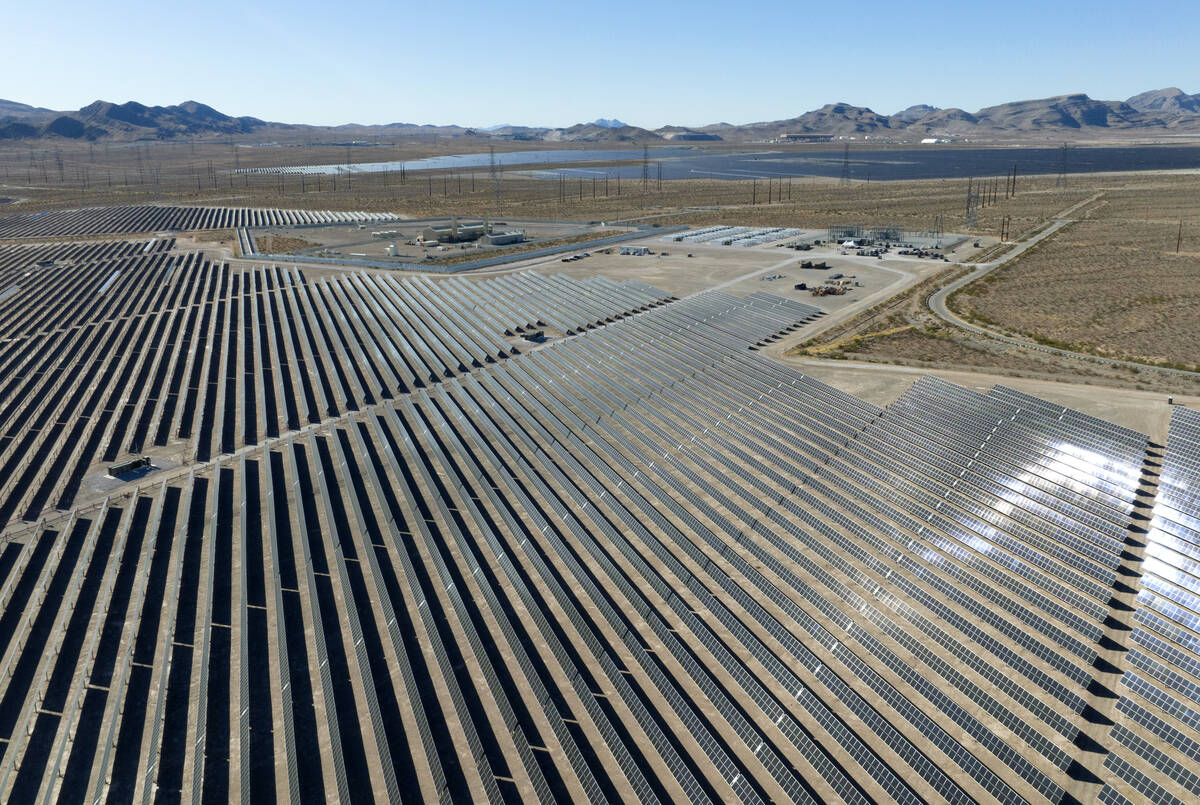EDITORIAL: The bill for clean energy is coming due
Many green energy schemes are like putting your vacation on a credit card. It sounds convenient. You can travel to Europe or Australia even if you don’t have the money to pay for the trip. But the good feelings may quickly dissipate when the bill comes due.
Clean energy supporters have long told Americans that solar and wind projects will lower power prices. The reasoning seems obvious: You have to pay to tap coal and natural gas, but the sun and wind are freely available.
That argument has been made here in Nevada. In 2020, state voters considered and approved Question 6, which placed a 50 percent “renewable portfolio standard” into the state constitution.
“A ‘YES’ vote on Question 6 would save Nevadans money,” its supporters wrote in the voter guide. “The cost of clean energy is already cheaper than dirty energy sources: electricity from a new large-scale solar power plant in Nevada is 45 to 70 percent cheaper than electricity from a new power plant fueled with out-of-state gas.”
Dozens of states have passed similar mandates, which demand that a certain percentage of energy usage derive from renewable sources. In several states, the standard is 100 percent.
Yet energy prices have risen dramatically. The Wall Street Journal recently noted that residential energy prices are up 32 percent over the past five years. In California, rates are up a staggering 63 percent. Nevada consumers haven’t seen a jump like that, but there have been plenty of complaints about higher power bills. NV Energy’s new demand charge isn’t going to make customers any happier. They’ll soon be saddled with paying for NV Energy’s $4.2 billion Greenlink project, too.
Democrats blame Republicans for these higher prices. They point to President Donald Trump’s “big, beautiful bill” rolling back wind and solar subsidies.
That explanation doesn’t fly. The bill limits future subsidies. That can’t explain prices hikes over the past five years. It should also raise a question: If solar and wind power are so much cheaper, why do they need perpetual subsidies? After three decades of handouts, they don’t.
And this is the bait-and-switch that many Americans, including Nevadans, fell for. You may have heard the term “Levelized Cost of Energy.” By that measure, solar and wind power look cheaper. But it doesn’t account for the reality that solar and wind power aren’t reliable and “need life support from reliable sources,” as energy expert Alex Epstein wrote this month.
“At 10 percent, (solar and wind power) can be somewhat affordable,” he wrote. “But at 50-plus percent there are huge new costs for transmission, grid-stabilizing, storage and overbuilding (to maximize solar and wind even during bad weather).”
Greens remain in denial. But more sober analysis finds that renewable mandates contribute to higher consumer energy costs.
“The vast deployment of subsidized solar and wind in America’s power sector today imposes hidden costs and undermines investment in reliable power sources,” Florida International professor Mario Loyola noted in a Journal commentary last month.
Mr. Loyola points out that economic distortions caused by government interventions intended to prop up green energy have disrupted the marketplace. ”The answer is to let the market respond to price signals by expanding supply as quickly as possible,” he wrote, adding, “Electricity costs nearly three times as much in states with the strictest renewable-portfolio standards as in those with none.”
High power bills aren’t popular. But if you want to lower them, you must understand what’s causing them to soar — the country’s increasing dependence on unreliable green energy.

















